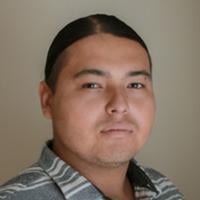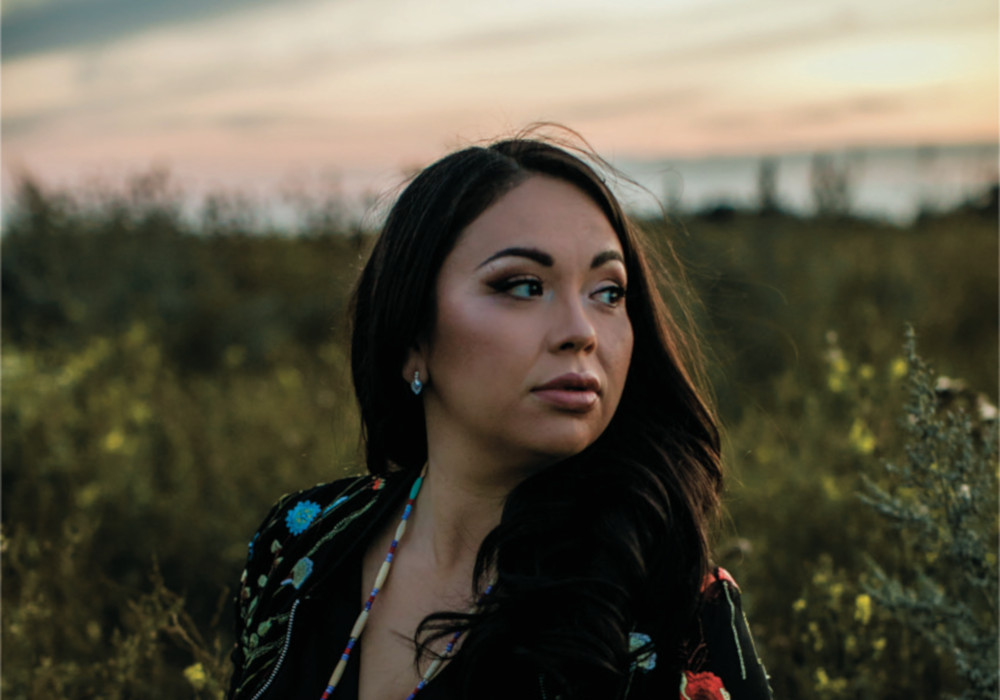It took Helen Knott five years to transform her experiences into a deeply honest work entitled In My Own Moccasins: A Memoir of Resilience.
Known for leading Indigenous resistance movements in B.C., including protests against the Site C hydroelectric dam, Knott is a grassroots leader, social worker and graduate student in the First Nations Studies program at the University of Northern British Columbia.
In her new memoir, she reflects on her life experiences, including overcoming addiction, healing from sexual violence and regaining her authentic self through ceremony, sisterhood and grassroots advocacy work.
And as a great-great granddaughter to an original Treaty 8 chief, Knott questions if her ancestor would have second-guessed agreeing to share the land, which includes much of northeastern B.C., through a sacred covenant.
“I sometimes wonder if [Chief] Bigfoot would have signed the Treaty at all, though, if he could see what has happened over the past few decades,” she writes in the book. “If he saw our life now and how our territory has been ripped up by roads, the landscape spotted with oil and gas wells, the rivers dammed like blocked arteries, would he have disappeared back into the mountains and refused the Treaty? And how would Bigfoot react if he saw our people struggling, witnessed the addictions and the suicides? Would he weep and pray if he knew that so many have gotten lost and have forgotten who they are and where they come from?”
The Tyee spoke recently with Knott about the experience of writing In My Own Moccasins. The interview has been lightly edited for length and clarity.
The Tyee: Can you tell me more about yourself: where you come from and where you are now?
Helen Knott: I am Dane Zaa, Nehiyaw, Métis, and my maternal grandfather was a white man from Montana. My community is Prophet River First Nations. I grew up essentially in Fort St. John. That’s where I spent most of my time, and where I live now. My son and I spent some time in the Okanagan, but we moved home after the provincial approval for Site C, the mega hydroelectric dam. That was kind of like a call to come home, and we’ve been here ever since. I love being in the north.
Could you tell me some of the work you’ve been doing with the grassroots community in B.C.? Have you participated in protests and resistance movements?
I think it was 2016 when we did a land-based camp at what was known as Rocky Mountain Fort, which was a historical site. And I just kind of halted the land clearing that was coming in preparation for Site C.
After an injunction was granted and the camp was disassembled, I participated in the Treaty 8 Justice for the Peace caravan that travelled across Canada. We spoke in different cities, and I attended the Federal Court appeal for the West Moberly and Prophet River First Nations.
My work has been dedicated to examining the connection between violence against the land and violence against Indigenous women, whether it’s through poetry or documentary (I did a short documentary for CBC called Peace River Rising). It’s also been the focus of my published academic work. That’s what my master’s thesis is about.
When did you start writing your book?
I started writing it five years ago. I’m really bad with timelines, which is funny because The Creator was like, “Write a memoir!”
Initially, I knew I was writing something, but I didn’t really know how to write a book. I went through the Banff Centre’s Indigenous Emerging Writers Program. When I showed up there, I had 30 pages. Richard Wagamese and Witi Ihimaera helped me to create a structure and to see myself as a writer.
And it is done ❤️. Birthing a book into this world is a laborious process, but oh.. so much love comes out of it. pic.twitter.com/mm3nTL7dPE
— Helen Knott (@helen_knott) August 25, 2019
What would you consider one of the most emotional aspects for you to revisit in your work?
I thought the most difficult part would be revisiting the sexual violence that I’ve encountered, but for me the parts that stung and were harder to go back to were when I wasn’t there for my son. It was those that caused a few feelings to stir up.
I was about three years into my sobriety, and I had to unpack a lot of the shame I felt as a mother with my counsellor. I had to do a lot of work around that, and sometimes it still comes up when I’m reading, looking, and thinking about it. But for the most part, I’ve really worked on healing that aspect of myself — to be present not only for myself, but to be the best mom that I can be.
Are there any individual mentors that you can call upon? How have they impacted you?
I love Kim Anderson! She wrote the afterword for my book and I worked with her on an article for the Keetsahnak Collection.
Prior to my book coming out, I experienced a wave of anxiety. I was freaking out, so I emailed her and we had a phone conversation, she really talked me down. She said, “It’s OK, I see the value in your words. This is what it’s going to do, and just breathe.” Although I’ve never met her in person, she’s definitely been there, like this brighter auntie. She’s been amazing.
Who do you hope to reach with your book?
I’m hoping that my words find themselves in the hands of people who have had similar struggles, so they can hopefully find some freedom.
What kind of feedback have you received so far?
It’s been really good. I’ve had people that I know and people that I don’t know reach out and tell me about which parts stuck with them or different aspects of the book that they identify with. It’s opened up a lot of conversations around healing. One man said he could hear the voices of his aunties and grandmothers, and I thought that was pretty powerful.
Do you want to see your book in schools?
Probably not in any curriculum before university, mainly because of the graphic nature. It’s definitely for people who’ve been through addiction and people who have suffered through the ramifications of intergenerational violence.
I included the idea that it was not meant to educate people on issues like violence against Indigenous women or colonialism, because I feel like so much of my efforts on an academic level and otherwise have been focused on educating people. This book is not about that.
Now that your book is published, what else do you have planned in terms of your writing career?
I’m working on a book called Taking Back the Bones, which uses a skeletal framework to weave together storytelling, critical analysis and poetry. With In My Own Moccasins, I really tried to tell a story without adding a lot of critical analysis. In this new work, I’ve evolved out of that to a new level. I would also like to branch into fiction.
You can find out more on Helen Knott through her blog called Reclaim the Warrior or through her Twitter @helen_knott. ![]()
Read more: Indigenous, Rights + Justice, Environment
















Tyee Commenting Guidelines
Comments that violate guidelines risk being deleted, and violations may result in a temporary or permanent user ban. Maintain the spirit of good conversation to stay in the discussion.
*Please note The Tyee is not a forum for spreading misinformation about COVID-19, denying its existence or minimizing its risk to public health.
Do:
Do not: